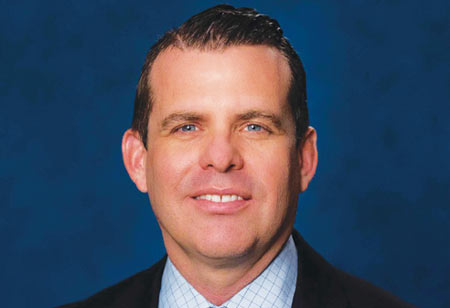

Thank you for Subscribing to Gov Business Review Weekly Brief

Are you ready for the present and future based upon what you learned from the past? It’s an honest question.
I have been in emergency management for almost 20 years and never imagined when I began that what we are experiencing today would even be possible. It’s not unique. There are more threats and hazards that can affect our organizations and communities than ever before. Are you prepared for them? What have you done to be ready both personally and organizationally? I’m honored to share my experience in hopes that it will assist you and your organization. As the Director of Emergency Management, one of my goals was to align resources and capabilities so that our department better meets the needs of the City, both present and future. Within the City’s Department of Emergency Management (DEM), there are five divisions representing five pillars of service: Emergency Preparedness (traditional Emergency Management), Health & Safety, Environmental, Wellness, and Workers’ Compensation. “As our organization has grown, we have been strategic and intentional about maintaining an expansive, interdisciplinary approach, focusing on two key areas: the national standards and best practices, and how agencies are modeling them” As our organization has grown, we have been strategic and intentional about maintaining an expansive, interdisciplinary approach, focusing on two key areas: the national standards and best practices, and how agencies are modeling them. Since then, we have achieved accreditation from the Emergency Management Accreditation Program. (EMAP) and certifications from the International Organization for Standardization (ISO) for 14001 (Environmental Management – across city functions) and 45001 (Health & Safety - City Hall). Our team members meet, or are progressing towards, achieving Certified Emergency Manager (CEM) certification by IAEM. The Division of Emergency Preparedness, as noted previously, is most like traditional emergency management as this division manages the City’s emergency operations plans, training and exercise, continuity planning, public outreach, etc. Within our department, however, each division has emergency response functions specific to their respective disciplines. Additionally, every member of the Department has an assigned role in the Emergency Operations Center. The divisions work collaboratively within the Department, but also work closely with not only the departments associated with first response, but all City departments. Some of this work is facilitated through our Emergency Management Council (EMC). The EMC was formed and consists of department directors and designees that provide guidance and address citywide emergency management related issues. With a general sense of the way we approach emergency management, I would like to share in some detail how we have incorporated the pillar of Wellness into our work. Long before the COVID-19 pandemic, Wellness began taking shape in the City’s vision and strategic planning process. The vision of a Wellness Center where employees could receive mental health and occupational medical services by on-site healthcare providers came to fruition in October 2023. By streamlining services from multiple vendors, we were able to reduce costs, travel and wait times, and bolster a continuity of care for our workforce. For this mission to be successful, we prioritized securing the right location, culturally competent mental health clinicians, and a trusted third-party occupational services vendor. The occupational medical services side of the Wellness Center is staffed by a full-time physician, nurse, medical/xray technician, and administrative assistant. Services provided include mandatory annual physicals for police and fire, annual physicals for non-represented (union) employees, treatment of non-life-threatening work injuries, vaccinations, hearing tests, and much more. To increase the level of service to our injured employees, our Workers’ Compensation team is also available on-site to provide support. The mental health & wellness side of the Wellness Center is staffed by two full-time clinicians one Licensed Clinical Social Worker (LCSW), one Licensed Marriage and Family Therapist (LMFT) and a credentialed facility dog. Our LMFT’s primary focus is on public safety, while our LCSW’s primary focus is on all other non-public safety departments. Both respond to critical incidents city-wide and work to increase capacity and access to outside mental health professionals for long-term care. One unique feature of the center is a separate entrance to the Wellness side ensuring anonymity for those seeking mental health services. The Wellness Center also houses two full-time Lifeline coordinators who are lead peer-to-peer police and fire employees. These individuals have advanced training in this area. Both the clinicians and coordinators spend considerable time implementing proactive programs such as the Vitanya Brain Performance Program which have a profound impact on reducing the risk and likelihood of a staff member ending up in crisis. I share this with you in hopes of encouraging you to start or continue to reimagine your organization. Our organizations face a more complex landscape than ever before. Incorporating non-traditional disciplines into the emergency management landscape furthers the professionalization of our field, increases capabilities, encourages innovative solutions to current issues, and better prepares us for our future.I agree We use cookies on this website to enhance your user experience. By clicking any link on this page you are giving your consent for us to set cookies. More info

However, if you would like to share the information in this article, you may use the link below:
https://www.govbusinessrevieweurope.com/cxoinsight/ryan-turner-nwid-434.html